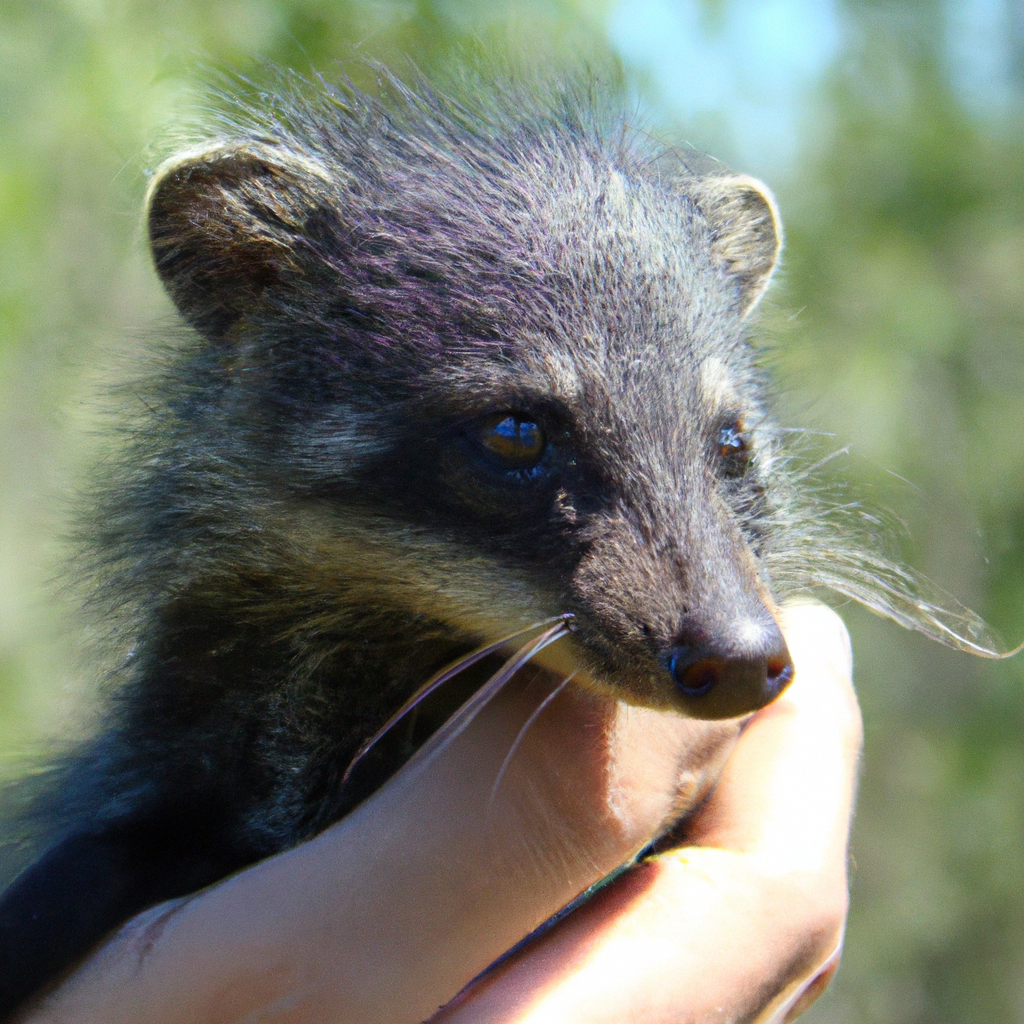In the quiet depths of the forest, a hidden world unfolds, filled with remarkable tales of triumph and resilience. It is within this realm that brave individuals dedicate themselves to a noble cause: wildlife rehabilitation. Each day, these unsung heroes embrace the immense challenge of rescuing and rehabilitating native animals, offering them a second chance at life. With unwavering determination and compassionate hearts, they navigate a labyrinth of adversity, ensuring that the cries of the voiceless are heard and answered. Welcome to the enchanting realm of wildlife rehabilitation, where the harmony between humans and Mother Nature is beautifully restored, one precious life at a time.
1. A Tender Touch: The Art of Wildlife Rehabilitation and Conservation
Wildlife rehabilitation and conservation are both delicate and intricate processes that require a compassionate and skillful touch. It is an art that strives to protect and heal our diverse wildlife populations, ensuring their survival for generations to come.
In the world of wildlife rehabilitation, every creature is treated with the utmost respect and care. Dedicated individuals work tirelessly to provide the necessary aid and medical attention to injured or orphaned animals, nursing them back to health and preparing them for a successful return to their natural habitats.
One of the fundamental aspects of wildlife rehabilitation is the creation of a safe and nurturing environment. This entails carefully constructing enclosures that mimic the natural habitats of the animals, allowing them to regain their physical strength and develop the skills required for life in the wild. From spacious aviaries for birds to expansive enclosures for mammals, these specially designed spaces provide a temporary sanctuary where animals can recover and flourish.
Furthermore, wildlife rehabilitation encompasses various techniques to promote environmental conservation. Education plays a pivotal role in this regard, as it helps raise awareness about the importance of protecting wildlife and their habitats. By showcasing the beauty and significance of these creatures, rehabilitation centers inspire individuals to actively participate in conservation efforts.
Another vital aspect of wildlife rehabilitation is focusing on sustainable practices. From using organic and locally sourced food for the animals in their care to implementing eco-friendly initiatives, these dedicated individuals play a crucial role in minimizing our impact on the environment. By adopting these practices, they strive to create a harmonious balance between human activities and the thriving wildlife populations we are committed to protecting.
The tender touch required in wildlife rehabilitation extends beyond physical care to include emotional support for the animals. Through compassion and patience, rehabilitators aim to alleviate the stress and trauma experienced by these creatures during their time in human care. This requires the establishment of strong bonds and an understanding of each animal’s unique needs, ensuring they receive the stability and love necessary for a successful rehabilitation journey.
In conclusion, wildlife rehabilitation and conservation intertwine to form a remarkable art that combines scientific knowledge, compassion, and dedication. Through careful attention to detail, a safe and nurturing environment, sustainable practices, and emotional support, these unsung heroes work tirelessly to protect and heal our wildlife, leaving an indelible mark on both the animal kingdom and humanity itself.
2. From Rescue to Release: Nurturing Native Wildlife back to Freedom
Once a wild animal is successfully rescued, the real journey begins – the journey towards their ultimate release and freedom. It is a painstaking process that requires unwavering dedication and specialized care to ensure these precious creatures have the best chance of survival in their natural habitat.
At our wildlife rehabilitation center, we provide a safe haven for injured and orphaned animals, giving them a second chance at life. Our team of experienced wildlife rehabilitators work tirelessly to nurse these animals back to health and equip them with the skills needed to survive in the wild.
Here’s a glimpse into the steps involved in nurturing native wildlife back to freedom:
1. Veterinary Assessment and Treatment
Upon arrival, each animal undergoes a thorough veterinary examination to assess their physical condition. This includes diagnosing injuries, diseases, or malnutrition. Our skilled veterinarians then develop tailored treatment plans, which may include surgeries, medications, or nutritional support.
2. Nutrition and Hydration
Adequate nutrition is vital during the rehabilitation phase. Our staff ensures that every animal receives a balanced diet suited to their species and individual requirements. Specialized formulas, supplements, and feeding techniques are utilized to meet their nutritional needs and promote optimal health.
3. Enclosure and Enrichment
Providing appropriate enclosures is crucial for the natural development of the rescued wildlife. Different enclosures are designed to mimic the animals’ natural habitats, allowing them to practice essential skills such as climbing, swimming, or foraging. Enrichment activities like puzzles, toys, and environmental stimuli are introduced to enhance their mental and physical well-being.
4. Behavioral Conditioning
As part of their preparation for life in the wild, animals must relearn important behaviors. Wildlife rehabilitators employ positive reinforcement techniques to encourage natural instincts and behaviors, such as hunting or nest-building. This enables them to regain the necessary survival skills that may have diminished during their time in captivity.
5. Gradual Release and Monitoring
Gradual release is a critical phase where animals are acclimated to their future surroundings. They progress from smaller enclosures to larger, semi-natural habitats, allowing them to regain strength, build muscle, and reacquaint themselves with their instincts. Our team closely monitors their progress during this time, ensuring their well-being and readiness for the wild.
From the moment of rescue to the rewarding sight of a successfully released animal returning to where it belongs, our commitment to rehabilitating native wildlife remains unwavering. It is a privilege to witness their remarkable transformation and to play a role in returning these creatures to their rightful place in the natural world.
3. Preserving Our Precious Species: The Importance of Wildlife Rehabilitation
Preserving our precious species is of utmost importance in ensuring the balanced ecosystem, and one crucial way to achieve this is through wildlife rehabilitation. Through this practice, injured or orphaned animals are provided with the care, nurturing, and medical attention they need in order to recover and eventually be released back into their natural habitats.
Why is wildlife rehabilitation important?
- Sustaining biodiversity: Wildlife rehabilitation plays a key role in maintaining biodiversity by preventing the loss of species. By rescuing and rehabilitating injured animals, we are able to prevent their untimely demise, thereby preserving the delicate balance of ecosystems.
- Preserving endangered species: Many endangered species rely on wildlife rehabilitation to increase their populations. By rescuing, rehabilitating, and releasing these animals, we contribute to their conservation and give them a fighting chance for survival.
- Educating the public: Wildlife rehabilitation facilities also play a critical role in educating the public about the importance of conservation efforts. Visitors can witness firsthand the tireless efforts undertaken to save these animals, thus raising awareness and inspiring individuals to take action.
Challenges faced in wildlife rehabilitation:
- Resource limitations: Wildlife rehabilitation centers often face resource limitations, ranging from funding and staffing to space and equipment. These limitations can hinder their ability to adequately care for a large number of animals, making it crucial for organizations and individuals to support these facilities.
- Species-specific care: Each species requires unique care and attention. Wildlife rehabilitators must possess specialized knowledge and skills to provide effective and appropriate treatment for various animals, from birds and mammals to reptiles and amphibians.
In conclusion, wildlife rehabilitation is a vital practice that helps protect and preserve our precious species. By upholding biodiversity, conserving endangered species, and educating the public, these facilities contribute to the overall health and sustainability of ecosystems. Despite the challenges faced, it is imperative that we support and appreciate the tireless efforts of those involved in wildlife rehabilitation.
4. When Man and Beast Heal: The Journey of Rehabilitating Native Animals
In the enchanting realm of wildlife rehabilitation, the intricate dance of compassion and precision unfolds. Native animals, injured or orphaned, embark on transformative journeys guided by the hands of dedicated caretakers. Together, man and beast strive to restore health to the wild.
The Gentle Touch: A Balancing Act of Care
In the quiet corners of rehabilitation centers, skilled professionals and tireless volunteers become the guiding lights for these fragile creatures. Each animal’s unique needs are meticulously attended to, from the comforts of a cozy enclosure to a personalized diet that nurtures their recovery. Blending scientific expertise with the warmth of empathy, these caretakers provide a nurturing environment that supports the animal’s natural instincts and encourages physical and behavioral healing.
A Sanctuary of Rehabilitation: Crossing Paths with Species
As the journey of rehabilitation progresses, the paths of different native animals often intertwine, creating a microcosm of ecosystem dynamics. Creatures great and small coexist within a safe haven, where predators and prey peacefully reside side by side. Here, a fascinating tapestry of interactions emerges: an owl silently observing a skittish rabbit, a squirrel playfully sharing a branch with a raccoon, or a deer finding solace in the companionship of a neighboring fox.
Fostering Self-Sufficiency: Life Skills for Return to the Wild
Healing is not just about physical recovery; it is also about preparing these resilient beings for self-sufficiency in the untamed wilderness they call home. Nurture becomes guidance as animals are taught essential survival skills, such as foraging, hunting, or avoiding potential threats. With gentle encouragement, they are nurtured to confidently spread their wings, scurry up trees, or explore vast open spaces, reclaiming their rightful place in nature’s splendid tapestry.
Releasing the Wild Spirit: The Bittersweet Farewell
Finally, the time comes for these remarkable individuals, now rejuvenated and brimming with natural instincts, to embark on their long-awaited journey back to their native habitats. It is a bittersweet moment, filled with joy and a fleeting sense of loss, as man and beast part ways. Yet, it is an affirmation of success, a testament to the power of compassion, and an everlasting bond between the human caretakers and the animals they guided along the path of recovery.
Wildlife rehabilitation offers us an opportunity to help our native wildlife return to the sceneries of their natural habitats. It is a valuable service that helps humans and animals alike. We should all consider contributing our time, energy, and resources to preserving and protecting these precious creatures. By doing so, we can ensure a better, brighter future—not only for us but for our beloved wildlife as well.


